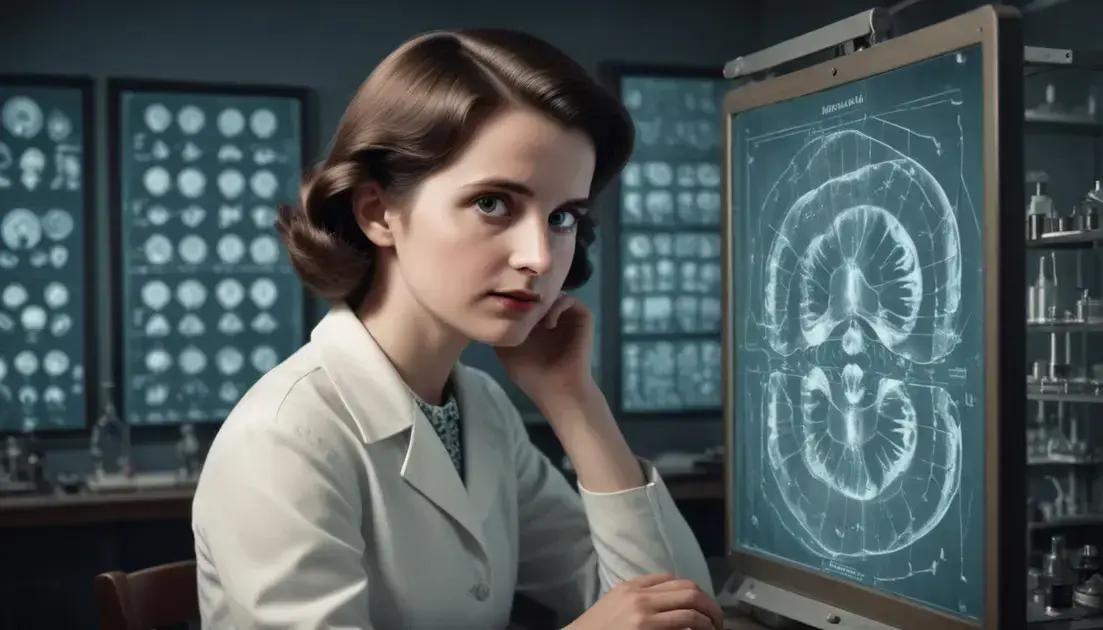
Rosalind Franklin: The Forgotten Woman of DNA
Rosalind Franklin was a pivotal figure in the discovery of DNA’s structure, best known for her X-ray diffraction images that provided crucial insights into the double helix. Despite her significant contributions, she faced controversy regarding recognition from her male counterparts, notably Watson and Crick. Her legacy continues to impact modern science, inspiring new generations of scientists, particularly women, and emphasizing the importance of acknowledging all contributions in research.
Rosalind Franklin is often overshadowed in the story of DNA discovery, but her contributions are nothing short of revolutionary. Curious about her journey? Let’s dive in!
Who was Rosalind Franklin?
Rosalind Franklin was an English chemist and X-ray crystallographer. She played a key role in understanding the structure of DNA. Born in 1920, she showed an interest in science from a young age. She went to college and later earned her PhD. This made her one of the few women in her field at that time.
Franklin worked at King’s College London. There, she took famous X-ray diffraction images of DNA. One of her photos, known as Photo 51, was crucial for discovering the double helix structure of DNA. Many say that her work was overlooked and underappreciated.
Despite facing challenges and biases as a woman in science, Rosalind persevered. She hoped her research would lead to breakthroughs in health and biology. Sadly, she passed away in 1958, but her legacy lives on. Today, she is celebrated for her contributions to science and her fight for women’s roles in the field.
Her groundbreaking work on DNA
Rosalind Franklin’s work on DNA was truly groundbreaking. She used X-ray diffraction to take images of DNA molecules. These images revealed crucial details about DNA’s structure. One of her key images, known as Photo 51, showed the famous double helix shape.
This photo was critical for scientists like Watson and Crick. They used her findings to develop their model of DNA. However, Franklin didn’t receive the recognition she deserved during her lifetime. Her contributions were overlooked, partly because she was a woman in a male-dominated field.
Franklin’s X-ray images provided evidence that changed biology. The understanding of DNA led to advancements in genetics and disease research. Her work continues to impact science today, making her a vital figure in scientific history.
The controversy surrounding her contributions
The controversy surrounding Rosalind Franklin’s contributions to DNA remains significant. Many believe she was overlooked in history. While her work was crucial, others took the credit. James Watson and Francis Crick used her data without fully acknowledging her.
Franklin’s X-ray images helped them build their DNA model. However, they didn’t mention her in their initial papers. This omission sparked debates about recognition and ethics in science. It raised questions about how women’s contributions have often been ignored.
Many scientists today argue for Franklin’s rightful place in history. She deserves recognition for her essential work. The controversy shows how important it is to acknowledge contributions from everyone, regardless of gender.
Franklin’s impact on modern science
Rosalind Franklin’s impact on modern science is profound and lasting. Her X-ray images of DNA advanced our understanding of genetics. This knowledge has led to breakthroughs in medicine and biology. Scientists now use DNA information to study diseases and develop treatments.
Her work inspired future generations of scientists, especially women. They see her as a role model. Franklin’s contributions encourage many to pursue careers in science. Today, her research helps in areas like genetic engineering and forensic science.
Because of Franklin, we understand the importance of collaboration in research. Her story reminds us to recognize all contributions in science, no matter the gender. This is crucial for a diverse and innovative scientific community.
Conclusion
In conclusion, Rosalind Franklin’s legacy is crucial in the world of science. Her groundbreaking work on DNA has shaped modern biology and medicine. Franklin’s story teaches us the importance of recognizing the contributions of all scientists, especially women. Her perseverance despite challenges inspires future generations.
Today, her impact is seen in genetic research, medical advancements, and education. By honoring her achievements, we encourage more young people to enter science. We also remind ourselves that collaboration and inclusion drive innovation. Remembering Franklin’s journey helps pave the way for a diverse scientific community.


